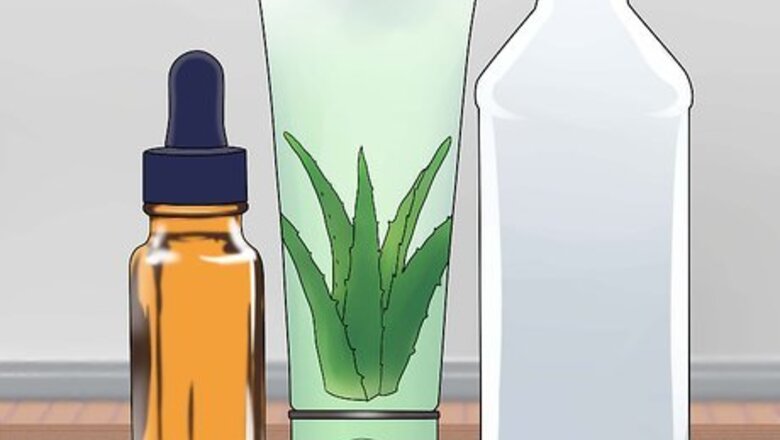
views
Warning: Hand sanitizer needs at least 65% alcohol content to effectively kill bacteria.
Making Gel Alcohol Hand Sanitizer without Fragrance
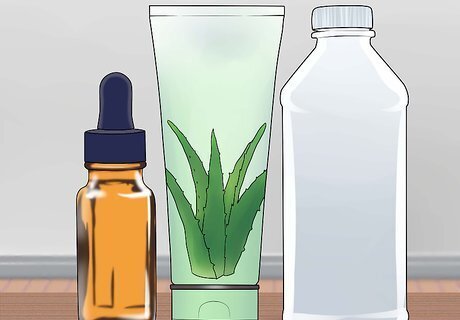
Obtain your ingredients. The components needed to make gel alcohol hand sanitizer are common household products, so it’s quite possible that you already have them. If you don’t, you can obtain them easily at any drug or grocery store. You will need rubbing (isopropyl) alcohol that is at a minimum 91% pure and plain aloe vera gel. That’s it! To be comparable to store-bought products like Purell or Germ-X in terms of effectiveness, the final product needs to be at least 65% alcohol. Using 91% isopropyl alcohol will place your final product within that range. If you can find 99% isopropyl alcohol, choose that. It’s not required, but it will increase the germ-killing effectiveness of your final product. Aloe vera gel also comes in a variety of purity options. You’ll want the purest that you can find – simply check out the label to get the purity information. This doesn’t alter the effectiveness of the product, but using the purest you can find will ensure that your final mixture contains the least amount of additives and additional chemicals.

Gather your tools. The tools needed are also very common household items, which makes this process even easier! You’ll need a clean bowl, a spatula (or spoon), a funnel, and a recycled liquid soap or hand sanitizer bottle. If you don’t have an empty bottle on hand to upcycle, you can use any kind of container you want, as long as it has a lid.
Combine the ingredients. Measure out ⁄4 cup (180 ml) of isopropyl alcohol and ⁄4 cup (59 ml) of plain aloe vera gel and dump both of them together into the bowl. Use your spatula (or spoon) to stir vigorously until the ingredients are fully mixed together. If you’d prefer not to mix by hand in a bowl, you can use your food processor instead.

Bottle your product. Use the funnel to pour the mixture directly from the bowl into the bottle you’ve chosen to use. Replace the pump, lid, or cap on your bottle. Now you have your finished product and it's ready to use immediately! The mixture will keep for 6 months or more. Store it away from direct sunlight to get the longest shelf life possible. Put the mixture in smaller bottles that can easily fit into a purse, backpack, or briefcase for use on the go. If you purchase any commercial sanitizers, save the bottles so that you can upcycle them later, since those are perfect for this. You can usually purchase new empty bottles of this size at the grocery store. Check the aisle with travel-size personal care items. EXPERT TIP Jonathan Tavarez Jonathan Tavarez Property Hygiene Enabler Jonathan Tavarez is the Founder of Pro Housekeepers, a premium cleaning service headquartered in Tampa, Florida catering to residential and commercial clients across the United States. Since 2015, Pro Housekeepers uses rigorous training methodologies to ensure high quality cleaning standards. Jonathan has over five years of professional cleaning experience and has over two years of experience as the Communications Director for the United Nations Association Tampa Bay. Jonathan earned a BS in Management and Marketing from the University of South Florida in 2012. Jonathan Tavarez Jonathan Tavarez Property Hygiene Enabler Expert Trick: If you don't have a funnel, pour the sanitizer into a plastic sandwich bag, then snip off the corner of the bag with scissors. That way, you can easily pour the sanitizer into the bottle without making a mess.
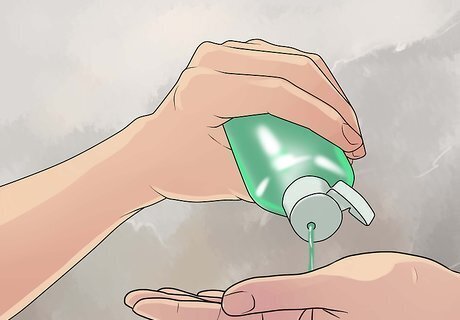
Use the sanitizer correctly. There is actually a proper way to use sanitizer to get maximum effectiveness from the product. Before you start, make sure your hands are clean of visible dirt and grime. Sanitizer isn't meant for situations when you find your hands dirty with actual dirt. Using about a palm-sized amount of the sanitizer, rub your hands briskly together for 20 to 30 seconds, taking care to get underneath your fingernails, between your fingers, the back of your hands and your wrists. Allow the sanitizer to dry completely, without wiping your hands off or rinsing them with water. Once the sanitizer dries completely, the process is complete.
Adding Essential Oils

Determine your goal(s) for adding essential oils. Essential oils can be added to your sanitizer for the fragrance.
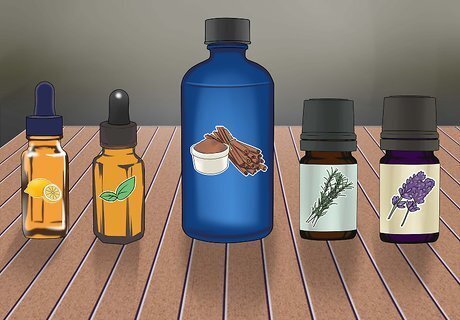
Choose essential oils for aromatherapy. Though there is no strong evidence, some people think that inhaling the scent of a particular essential oil can cause a variety of mental and emotional reactions. By adding them to your hand sanitizer, you may find some positive effects from smelling these fragrances. You can choose one oil or combine oils to create different scents. Some essential oils are most commonly employed for use in hand sanitizers than others. Cinnamon essential oil is said to reduce drowsiness and enhance concentration. Lavender essential oil may induce relaxation and feelings of calmness. Rosemary essential oil has been thought to boost information retention, alertness, and memory. Lemon essential oil has an uplifting scent that may help ease sadness while also boosting energy. Peppermint essential oil is an invigorating scent that some people find can help soothe frazzled nerves and improve mental clarity.
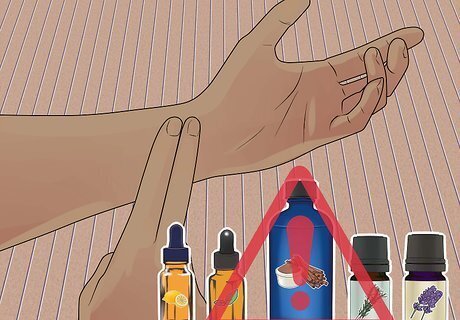
Use caution. Essential oils are highly concentrated and can have negative side effects if used improperly. Pregnant people and those with immune deficiencies shouldn’t use them without consulting a doctor first. If you’re new to the world of essential oils, do a skin patch test before adding it to your hand sanitizer and using it topically. Never apply an essential oil directly to the skin without diluting it first. Because they are so concentrated, some of them can be skin irritants. When working with essential oils, use the highest grade products that you can find. Check the label for terms like “pure grade”, “aromatherapy grade”, “certified organic” and “therapeutic grade” when purchasing.
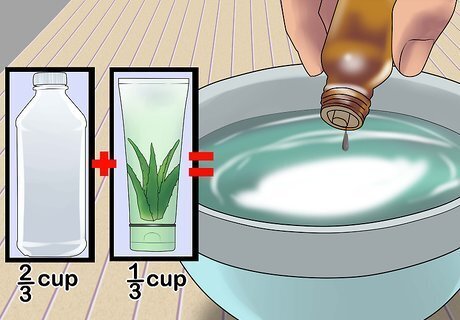
Add your chosen oils to your sanitizer. Measure out 2/3 cup of isopropyl alcohol and 1/3 cup of plain aloe vera gel and dump both of them together into the bowl. Add ten drops of your chosen essential oil(s). Do not exceed 10 drops! Use your spatula (or spoon) to stir vigorously until all of the ingredients are fully mixed together.
Making Gel Hand Sanitizer with Grain Alcohol

Obtain your ingredients. Most of the components needed to make the hand sanitizer are common household products, so it’s quite possible that you already have most of them. Start with a bottle of 190-proof grain alcohol, such as Everclear, which is 95% alcohol. Since your hand sanitizer needs to be at least 65% alcohol to be effective, using a high-proof liquor will ensure you get the strength you need. In addition, you'll need plain aloe vera gel, and any essential oils you'd like to use. Always double-check the alcohol content before you buy a bottle of grain alcohol since many commercial brands are less than 190-proof. Remember you may dilute the strength of the alcohol with other ingredients, so it will not maintain 95% alcohol content. The essential oils you choose are completely up to you. Lavender, lemon, peppermint, geranium, cinnamon, tea tree, and rosemary are common choices. You can use more than one if you like, but the total amount of essential oil you use should not exceed 10 drops. Aloe vera gel also comes in a variety of purity options. You’ll want the purest that you can find – simply check out the label to get the purity information.

Gather your tools. You’ll need a clean bowl, a spatula (or spoon), a funnel and a recycled liquid soap or hand sanitizer bottle. If you don’t have an empty bottle on hand to upcycle, you can use any kind of container you want, as long as it has a lid.
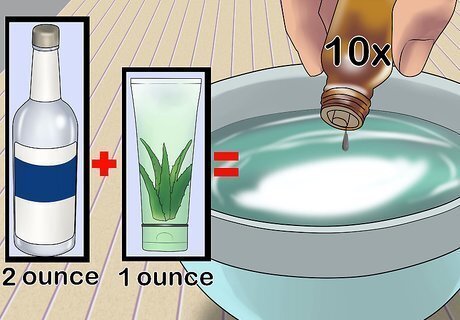
Combine the ingredients. Measure out 2 fl oz (59 ml) of grain alcohol and 1 fl oz (30 ml) of plain aloe vera gel and dump both of them together in the bowl. Add ten drops of your chosen essential oil(s). Use your spatula (or spoon) to stir vigorously until the ingredients are fully mixed together. You can adjust the amount of the products that you're using if you'd like, but keep the grain alcohol at a 2-to-1 ratio with the gel to ensure it's strong enough. If you’d prefer not to mix by hand in a bowl, you can use your food processor instead.
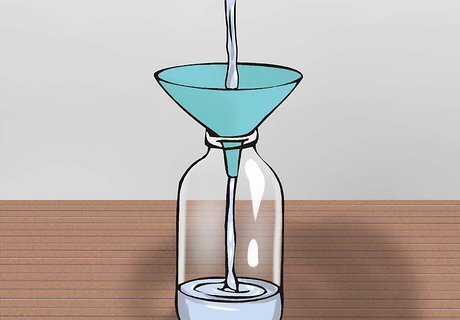
Bottle your product. Use the funnel to pour the mixture directly from the bowl into the bottle you’ve chosen to use. Replace the pump, lid, or cap on your bottle. Now you have your finished product and its ready-to-use immediately! Use the mixture within one month. Store it out of direct sunlight.


















Comments
0 comment